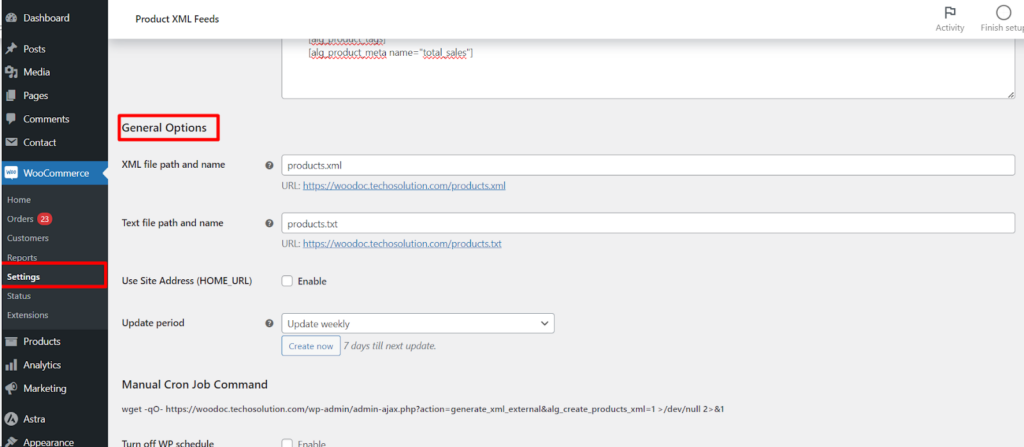This article explores the general settings available for managing individual product XML feeds within the Product XML Feeds for WooCommerce plugin. You can access these options by navigating to WooCommerce > Settings > Products and then clicking on the Product XML Feeds tab. Here, you’ll find separate tabs for each configured feed (e.g., Feed #1).
Understanding the Settings
XML file path and name
- This field defines the location and filename for your generated XML feed file.
- You can specify a custom path within your website’s directory structure (e.g., /products.xml).
- Alternatively, you can enable the Use Site Address (HOME_URL) option to automatically generate the file path based on your website’s URL (e.g., https://yourdomain.com/products.xml).
Text file path and name (Pro Version)
- This option, available in the Pro version of the plugin, allows you to create a text-based version of your feed alongside the XML file.
- Similar to the XML file path, you can define a custom location and filename for the text feed.
Use Site Address (HOME_URL)
- This option simplifies the file path configuration by automatically using your website’s URL as the base for the XML feed location.
- This ensures the feed file is accessible from the specified URL.
Update period
- This section allows you to define how frequently your product XML feed is automatically updated.
- Choose from various options like hourly, daily, weekly, or even create a custom update schedule.
- Selecting Create now will generate the feed immediately. The displayed message indicates the time remaining until the next scheduled update.
Additional Notes
- These general settings apply to each individual product XML feed you configure.
- Regularly updating your feed ensures it reflects the latest product information on your website.
- The update frequency depends on your product data changes and platform integration requirements.
By understanding and configuring these general options, you can effectively manage the location, file format, and update schedule for your product XML feeds within the WooCommerce environment.
